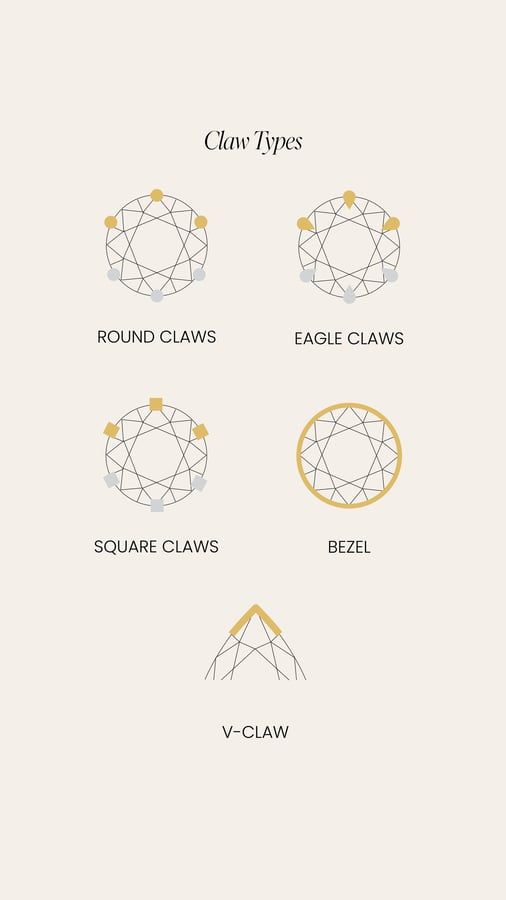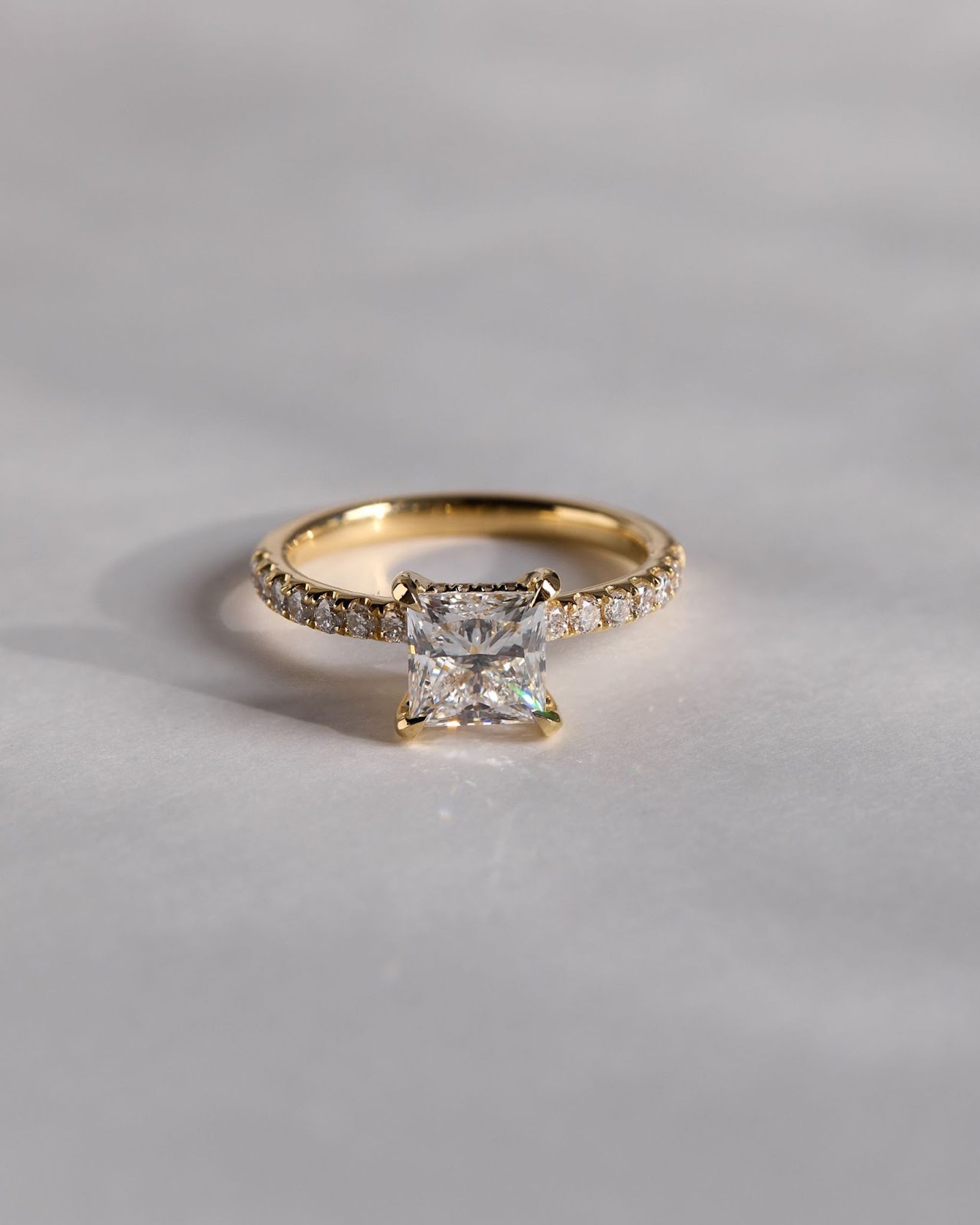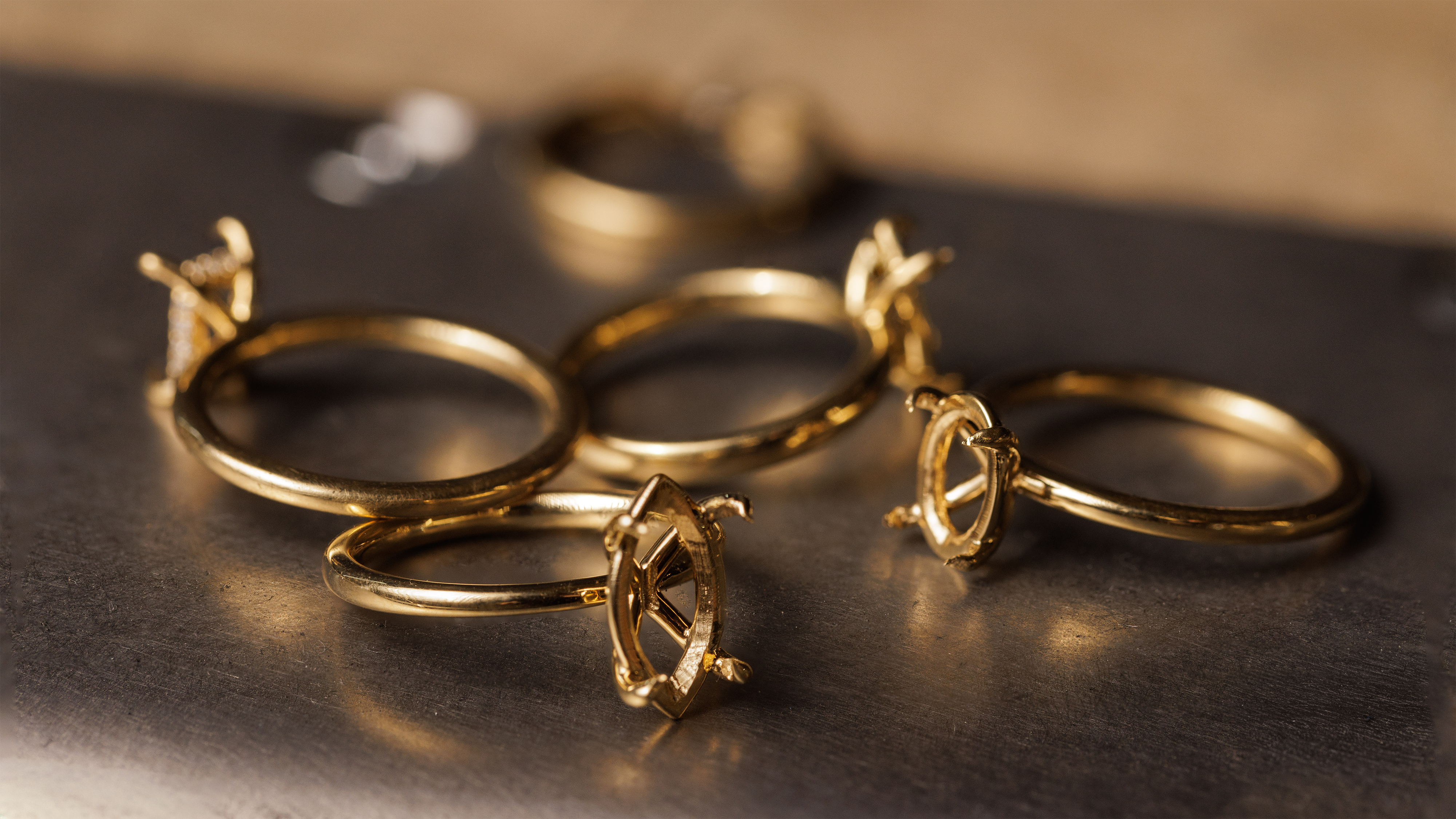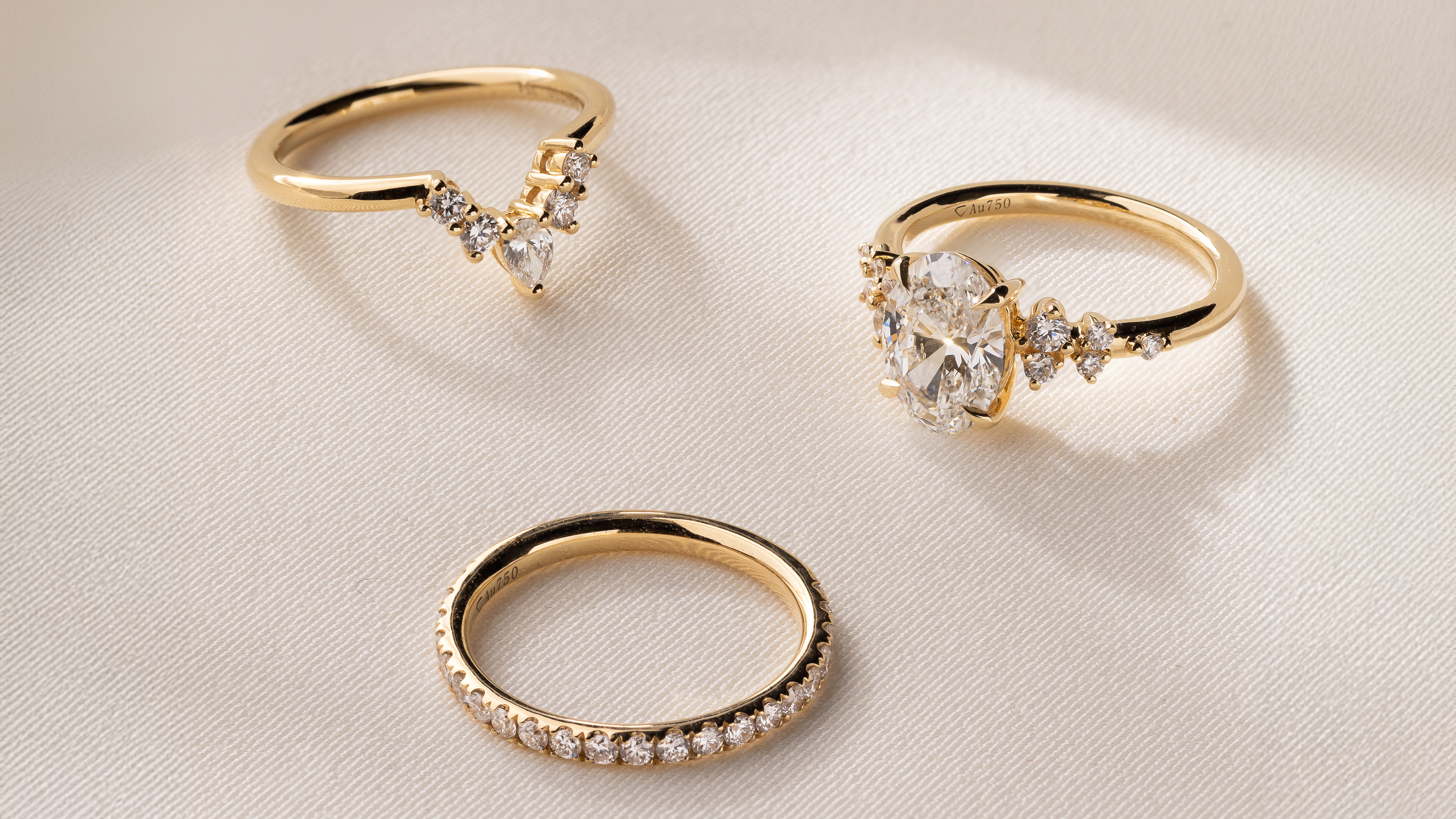
Somewhere along your journey to finding the perfect ring for your proposal, you will undoubtedly hear about engagement ring “claws”.
Among the dizzying array of design considerations, a ring’s claws, also known as prongs, are the metal supports designed to securely hold a diamond in place. Depending on the ring design and the gemstone, the number and style of these claws may vary. Their primary purpose is to grip the stone tightly while allowing light to enter, enhancing its sparkle.
For your dream engagement ring, let’s explore the ring claw options available at Cullen Jewellery, from the style to the number set around your precious centre stone.
Introduction to engagement ring claws
Engagement ring settings typically feature 4 or 6 claws, although less traditional designs may offer different possibilities. Claws help prevent centre stones from shifting or rotating and play a crucial role in your ring’s structure.
The number and style of claws not only impact the diamond's security but also its appearance. More claws offer greater security, while fewer claws allow more of the diamond to be showcased.
The number of claws on your engagement ring's centre stone not only impacts your ring’s strength but also creates the frame for your centre stone.

Engagement ring claw styles
Engagement ring prong tips come in many varieties, and just like with diamond cuts and colours, each style comes with its unique aesthetic and set of advantages. As a general rule, round and eagle tipped claws are among the most common, but depending on where you look, you may also encounter square, v-claw, and bezel settings.
Choosing the right claws for your engagement ring is a delicate balance between aesthetics and structural durability.

Round Claw Engagement Rings
Courtesy of their short profile, round claws offer a less ‘intrusive’ design, a feature that may be particularly suitable for small or narrow gemstones. Round prongs allow more light onto a gemstone’s surface, enhancing the stone’s brilliance.
Eagle Claw Engagement Rings
Eagle claws, also called eagle tipped claws, offer more than just aesthetic sharpness. Beyond their refined look, they excel at securing even the most delicate of gemstones in place. Eagle claws also provide minimal contact with the stone, magnifying your stone’s visibility from all angles. The “Cullen claw” combines the aesthetic sharpness of the eagle claw tips with rounded, flowing lines throughout the gallery.
Eagle claws also come in a variety of basket variations, including the tulip prong setting, which secures the stone in place in the style of a flower bulb.
Square Claw Engagement Rings
Square claws, also known as “tab” prongs, provide a squared-off, distinctive appearance. While less common than round or eagle claws, square claws can sometimes be appropriate for the right ring design.
Bezel Setting Engagement Rings
The unique way bezel settings wrap around gemstones has the benefit of making your stones look bigger while hiding blemishes and inclusions on the side of the gemstone. This highly secure ring setting is also well suited to active lifestyles, as there’s no chance of this setting catching on clothing.
V-claw Engagement Rings
The v-prong, true to its name, wraps around the point of the diamond, offering essential protection for pear, princess, or marquise cuts. This design safeguards the diamond’s delicate edges while blending seamlessly with its natural shape, providing a secure yet unobtrusive finish.
Cullen Jewellery: Your “I do” awaits
Cullen Jewellery engagement rings and wedding bands are designed to be worn and cherished forever.
Explore our ready to ship engagement rings or create your own unique engagement ring using our virtual engagement ring builder.


